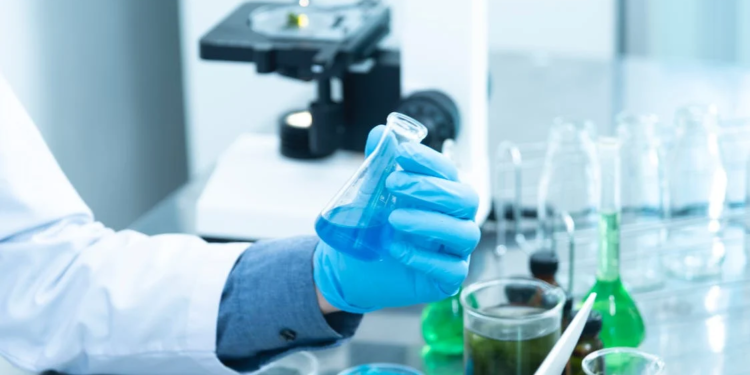In the ever-evolving world of science and technology, laboratories must continually adapt and improve. Upgrading a lab is not just about enhancing its physical space or equipment; it’s about fostering a more efficient, innovative, and productive environment.
Recent trends in laboratory improvement emphasize the importance of innovation, with laboratories performing an average of 27 million tests per day, showcasing the need for efficient data management and technological advancements. In this blog post, we’ll explore various ways to upgrade your lab for better performance and productivity.
Table of Contents
Implementing Advanced Technology
Incorporating advanced technology is crucial for a modern laboratory. Upgrading to the latest instruments and software can significantly increase accuracy and efficiency in lab processes. An excellent example of such technology is the single cell seeder, a sophisticated tool that enhances precision in cell research by allowing scientists to isolate and analyze individual cells. This capability is vital in areas like genetics and cancer research. Along with technologies like automation and AI, tools like the single cell seeder streamline repetitive tasks, allowing scientists to focus on complex analysis and innovation. Integrating such advanced equipment is key to keeping your lab at the forefront of scientific research.
Moreover, CRISPR technology, a groundbreaking gene-editing tool, has opened new frontiers in genetic research, allowing for precise modifications in DNA sequences. Additionally, advanced imaging techniques, such as high-resolution microscopy and spectroscopy, provide unparalleled insights into molecular and cellular structures. Integrating these technologies into lab operations not only boosts research accuracy and efficiency but also broadens the scope of scientific inquiry.
Optimizing Lab Layout and Design
The layout and design of a lab greatly impact its functionality. Redesigning for modular setups can offer flexibility for changing research needs. Also, incorporating ergonomic furniture and equipment reduces physical strain for lab workers.
Efficient layout planning should also involve creating designated areas for specific tasks to minimize cross-contamination and enhance safety protocols. Furthermore, integrating collaborative spaces can foster teamwork and idea exchange among researchers. Consider redesigning the workspace to facilitate easier movement and better organization, ensuring that equipment is placed strategically for optimal use.
Investing in Training and Development
Investing in the ongoing training and development of lab personnel is essential for maintaining a cutting-edge research environment. Incorporating virtual reality simulations into training modules provides hands-on experience in a controlled setting, accelerating learning and promoting a deeper understanding of complex procedures. Periodic workshops on emerging technologies and scientific trends facilitate knowledge exchange and foster a collaborative atmosphere within the lab.
Establishing a mentorship program helps integrate new staff smoothly and encourages a culture of continuous learning. Continuous education in the latest lab techniques, safety protocols, and technological advancements ensures that staff can work efficiently and safely. These investments in training and development empower lab personnel with the skills and knowledge needed to leverage advanced technology effectively and stay at the forefront of scientific research.
Eco-Friendly Practices
Integrating eco-friendly practices in the lab is good for the environment and can lead to cost savings. Implementing a lab recycling program and using biodegradable materials wherever possible are practical steps. Also, investing in renewable energy sources, like solar panels, can reduce the lab’s carbon footprint. Regular audits for energy efficiency and waste reduction can also be instrumental in maintaining sustainable practices. This includes reducing waste, using energy-efficient equipment, and implementing green chemistry principles.
Enhancing Data Management Systems
With the high volume of tests conducted daily, enhancing data management systems is essential. Integrating cloud computing can ensure secure and scalable data storage. The use of AI for data analysis can provide deeper insights and predictive modeling capabilities.
Establishing a centralized database enhances collaboration and data sharing among researchers. Upgrading to more sophisticated data analysis and storage solutions can improve accuracy, facilitate easier data retrieval, and support more complex research.
Regular Maintenance and Upkeep
Regular maintenance and upkeep are paramount for the seamless operation of lab equipment and facilities. The implementation of a digital maintenance log serves as an organized system to track and schedule necessary equipment servicing, ensuring that maintenance tasks are not overlooked and that equipment remains in optimal condition.
Moreover, conducting regular training sessions on equipment handling plays a crucial role in minimizing the risk of mishandling and damage. Properly trained lab personnel are more likely to use equipment correctly, extending its lifespan and preventing costly breakdowns.
Incorporating predictive maintenance through the use of IoT devices is a forward-thinking approach. This technology allows labs to monitor equipment in real-time, detect anomalies, and proactively address issues before they lead to equipment failures. This includes tasks like calibrating instruments, updating software to the latest versions, and promptly repairing any wear and tear identified during routine checks.
By consistently prioritizing maintenance and embracing digital tools and IoT technology, modern laboratories can ensure the efficiency, safety, and longevity of their equipment and facilities, ultimately enhancing the overall effectiveness of their research endeavors.
Conclusion
Upgrading your lab is a multifaceted approach that involves technological advancements, layout optimization, staff training, eco-friendly practices, improved data management, and regular maintenance. Implementing these improvements will not only enhance productivity and efficiency but also ensure your lab stays at the forefront of scientific research and development.


 Home
Home










